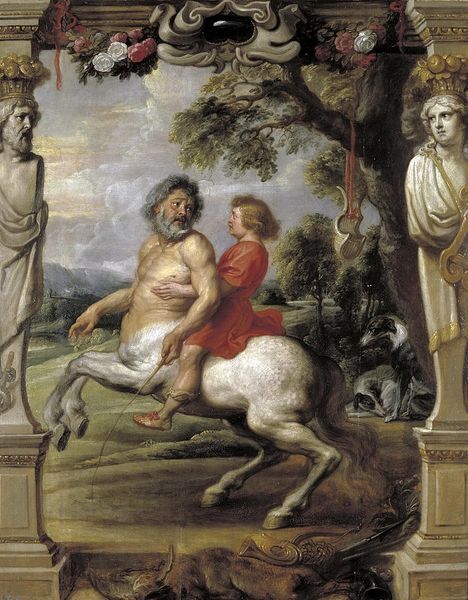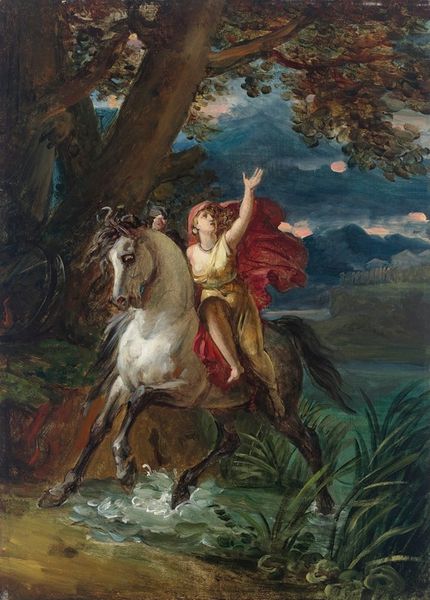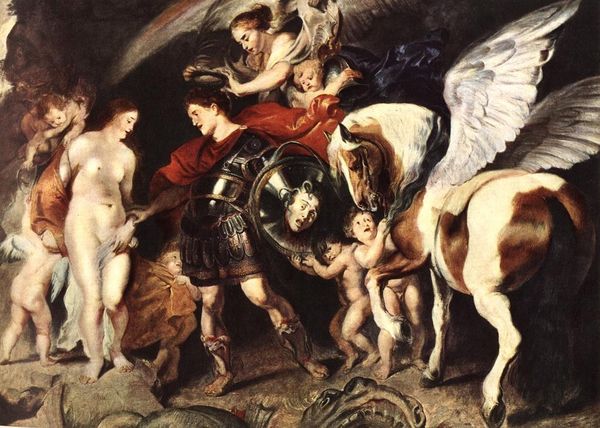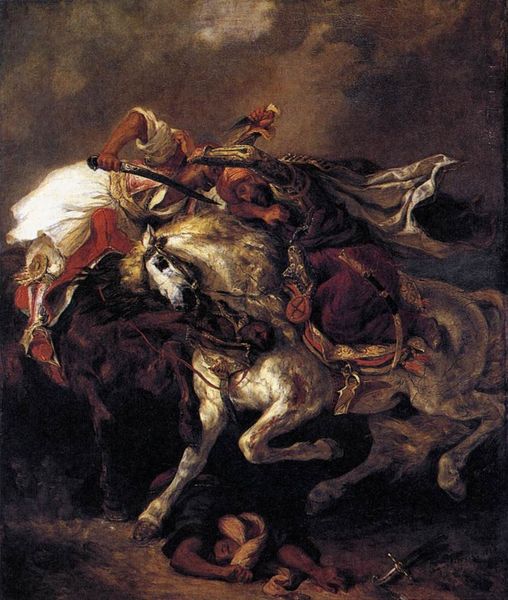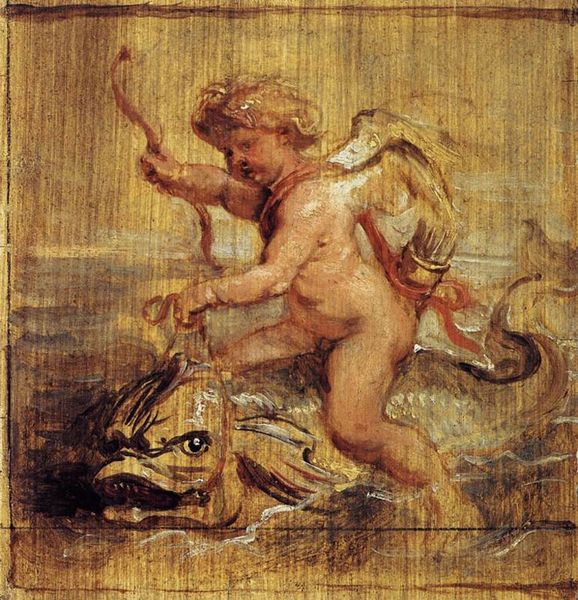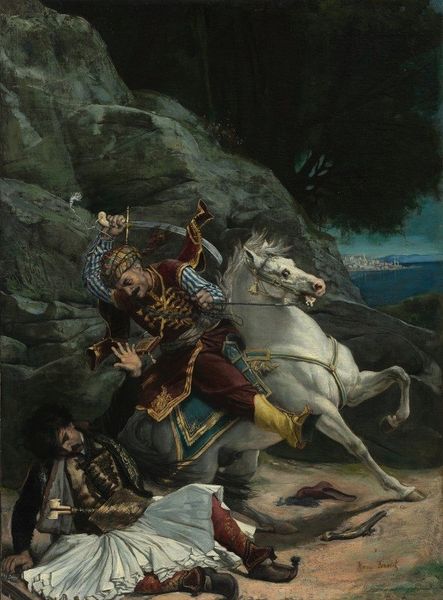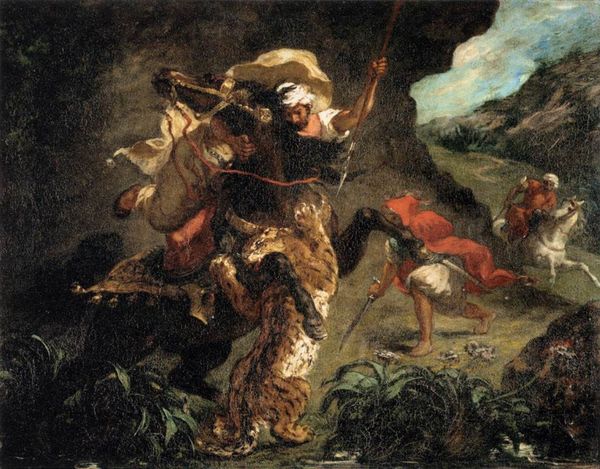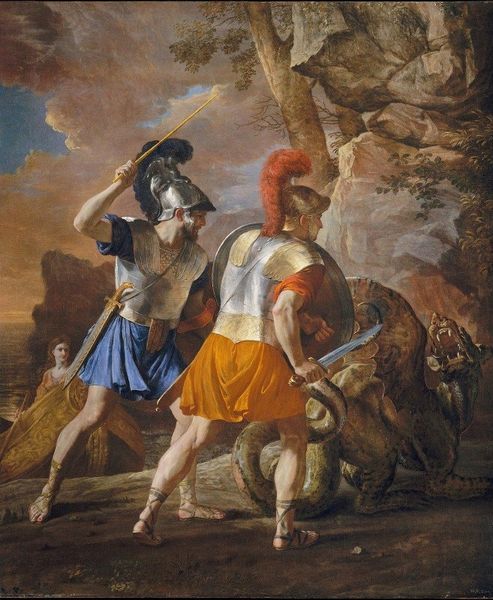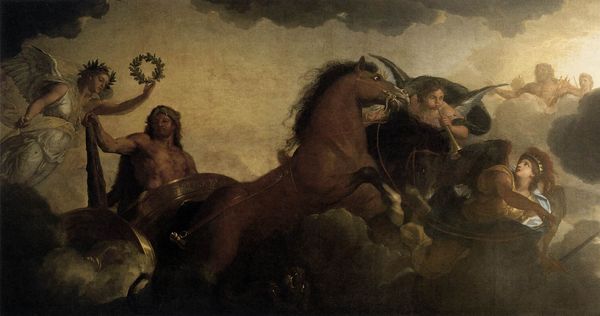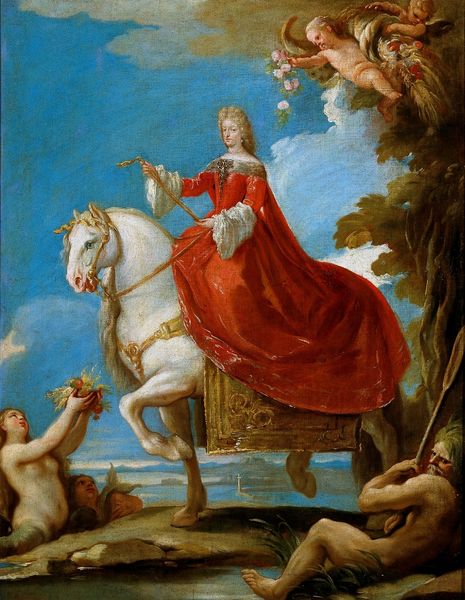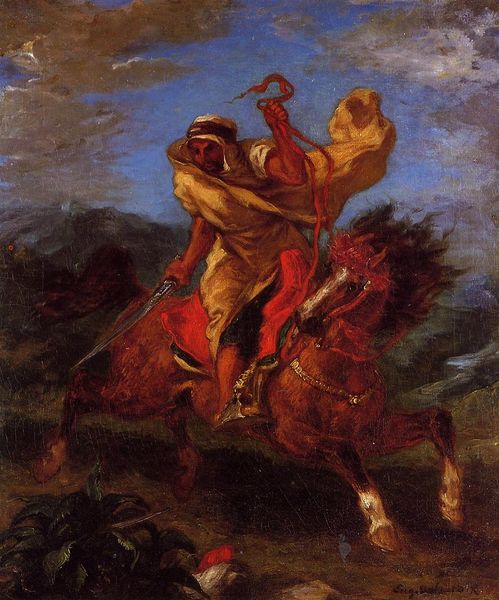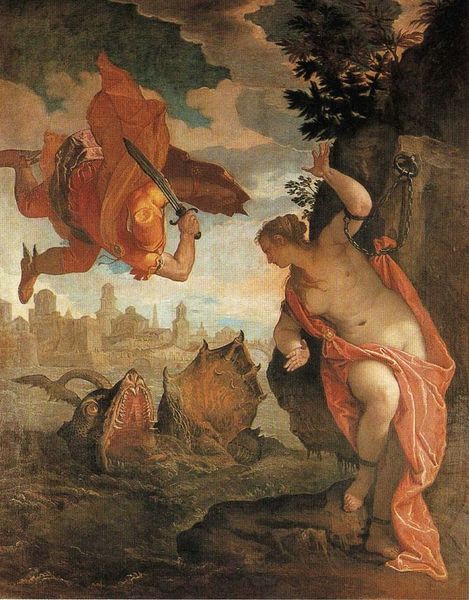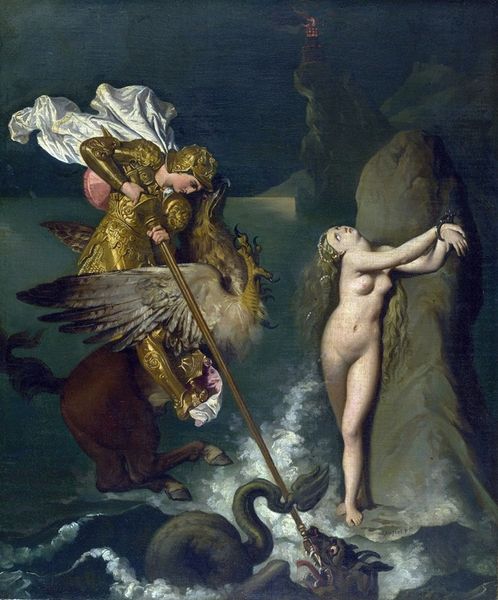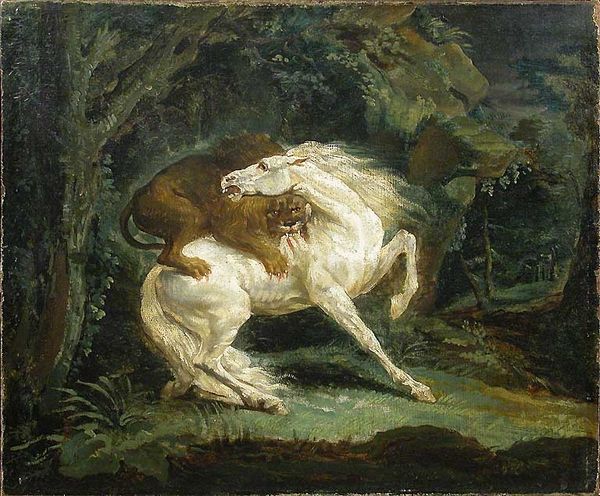
oil-paint
#
portrait
#
baroque
#
oil-paint
#
landscape
#
charcoal drawing
#
figuration
#
oil painting
#
christianity
#
mythology
#
history-painting
#
charcoal
Copyright: Public domain
Anthony van Dyck's "Saint George and the Dragon" was executed with oil paints, a medium perfected during the Renaissance, and still dominant at the time this canvas was created. The dynamic scene is built from layers of pigment, each applied with brushes of varying sizes to create texture and depth. It would have taken careful planning, and multiple sessions in the studio, to complete a painting of this scale and complexity. Van Dyck's technique reflects the increasing professionalization of art production in the 17th century, where artists often ran workshops with assistants to meet the demand for their work. The heroic subject matter—drawn from Christian legend—is elevated by the precious materials used in its creation: finely woven canvas, costly pigments, and the artist's own skilled labor. But ultimately, what gives the work its meaning is not just the finished image, but also the long tradition of painting it comes from, and the economic system that supported its creation. Understanding these factors allows us to appreciate the full depth of Van Dyck's achievement, going beyond the mere depiction of a saintly act.
Comments
No comments
Be the first to comment and join the conversation on the ultimate creative platform.
